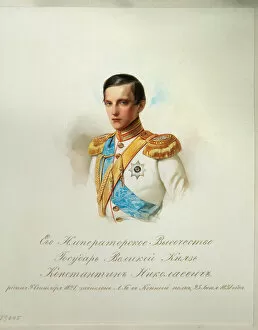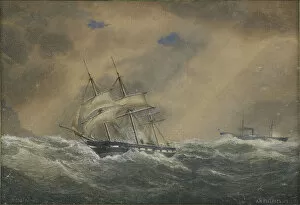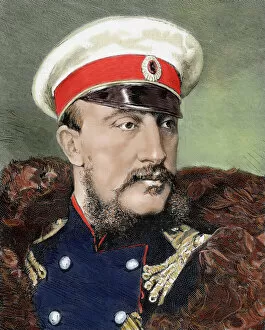Konstantin Nikolayevich Of Russia Collection
"Konstantin Nikolayevich of Russia: A Grand Duke's Legacy" Konstantin Nikolayevich of Russia, born in 1827, was a prominent figure in Russian history
For sale as Licensed Images
Choose your image, Select your licence and Download the media
"Konstantin Nikolayevich of Russia: A Grand Duke's Legacy" Konstantin Nikolayevich of Russia, born in 1827, was a prominent figure in Russian history. As a member of the Imperial Horse Guards, his portrait captured by Vladimir Ivanovich Hau showcases his regal presence and distinguished demeanor. The Constantine Palace in Pavlovsk and Strelna near St. Petersburg were two magnificent residences that held great significance to Konstantin. The view of these palaces gives us a glimpse into the grandeur and opulence he enjoyed during his lifetime. A notable moment in Konstantin's life was when he shared a boat trip with Emperor Nicholas I and Empress Alexandra Fyodorovna. An anonymous artist beautifully depicted this family outing, highlighting their close bond. The Steam Frigate Svetlana also played a role in Konstantin's story. This vessel symbolized Russia's naval power during the late 19th century and showcased his connection to military affairs. Throughout various portraits spanning decades, we witness Konstantin aging gracefully while maintaining an air of authority and elegance. These artworks serve as timeless reminders of his influential position within Russian society. From colored engravings to watercolor paintings, artists immortalized Konstantin Nikolayevich's image for generations to come. His contributions to Russian culture are forever etched into history, leaving behind an enduring legacy that continues to fascinate scholars and art enthusiasts alike. Konstantin Nikolayevich of Russia remains an iconic figure whose life is intricately woven into the fabric of Russian royalty. Through artistry and historical records, we can appreciate the depth of his impact on both political spheres and artistic expression throughout the 19th century.









